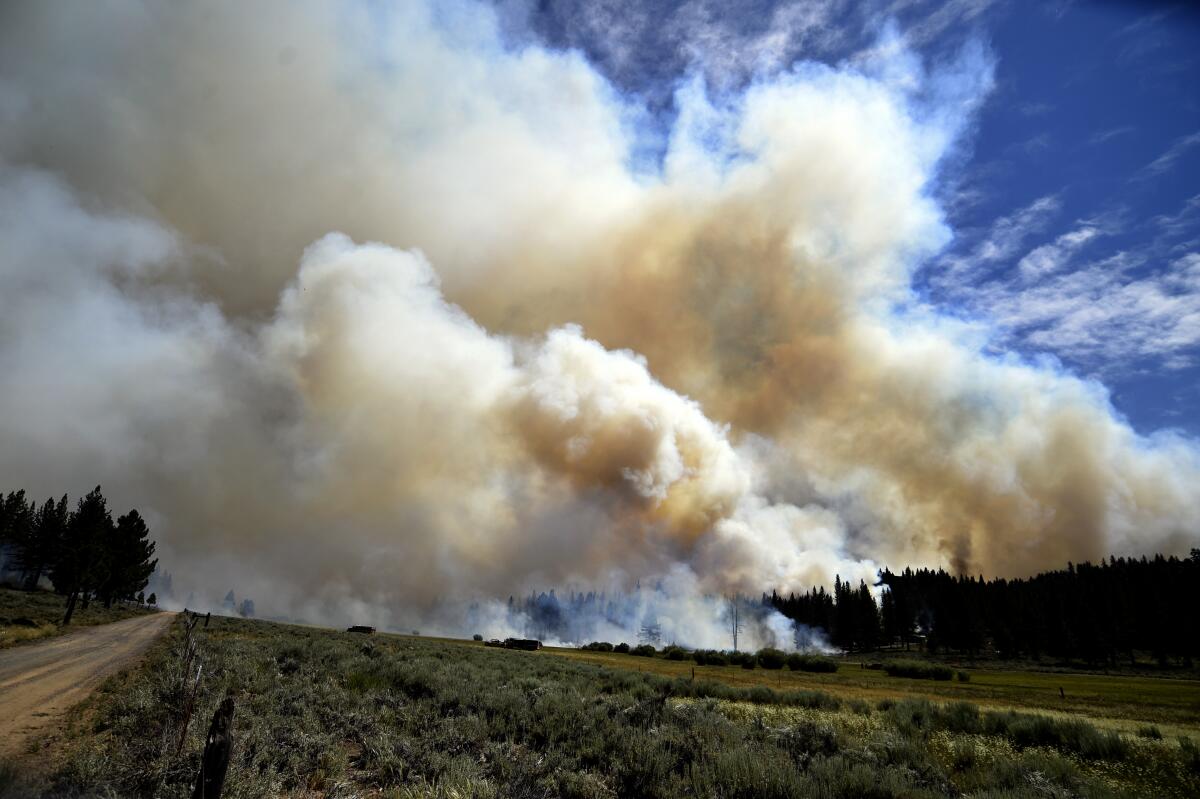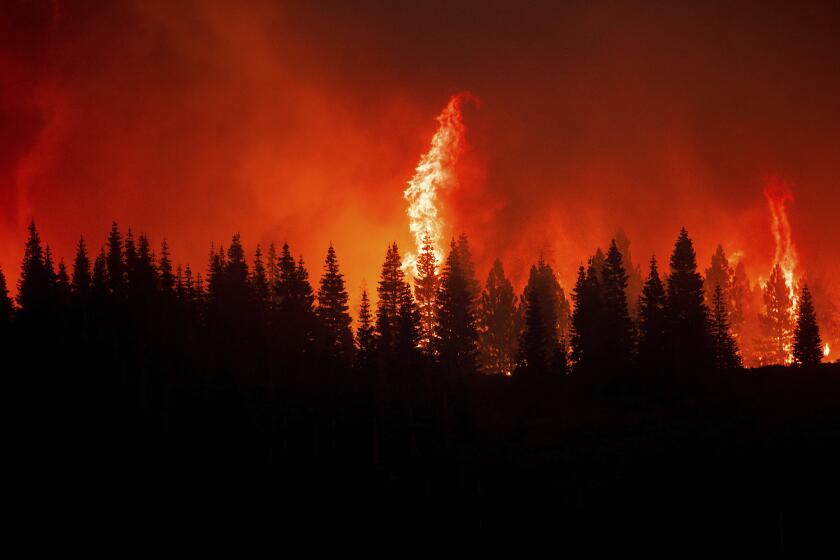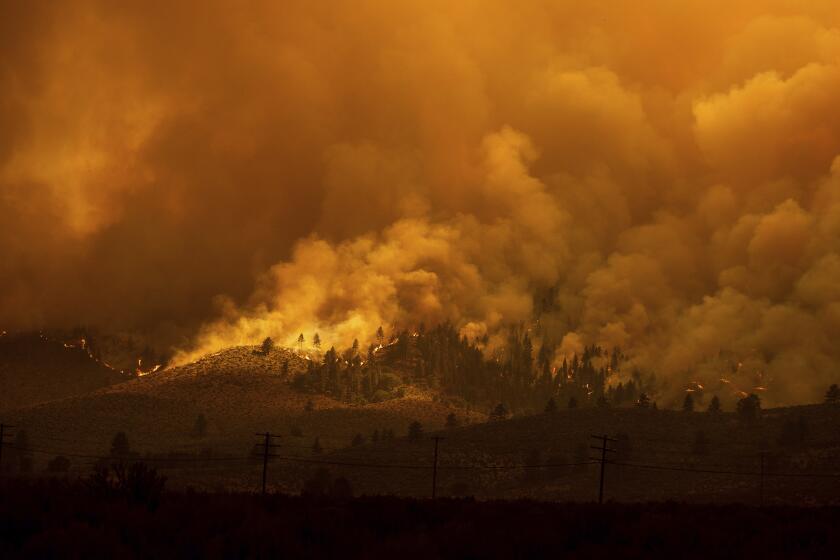Aggressive River fire burns structures near Yosemite; Sugar fire tops 90,000 acres

- Share via
The fast-moving River fire near Yosemite National Park exploded to more than 9,500 acres Tuesday as firefighters tried to protect communities in the area.
Officials said Tuesday night that one structure and four smaller structures, which could include outbuildings, have been destroyed and 600 others are threatened.
The River fire, which broke out about 20 miles southwest of Yosemite on Sunday afternoon, swelled to 2,500 acres in just a few hours and had spread to 8,000 acres by Monday evening, officials with the California Department of Forestry and Fire Protection said.
Already this year, there have been more than twice as many acres burned than during the same period last year — and hundreds more fires.
“The fire more than doubled in size since Sunday, so there’s a lot of activity going on,” said Chief Nathan Trauernicht with the UC Davis Fire Department, which deployed firefighters to assist Cal Fire with the blaze.
More than 1,200 firefighters and support personnel were battling the fire from the ground and air Tuesday, Cal Fire spokesperson Jaime Williams said.
The fire was 15% contained, Williams said.
Firefighters are up against dangerous conditions, including soaring temperatures, low humidity and frequent spot fires, officials said. The National Weather Service on Tuesday issued a heat advisory for portions of Mariposa County, where temperatures in the town of Mariposa peaked at 101 around noon.
“We’ve had very dangerous heat that the firefighters have been working in,” Williams said. “Things still remain very dry and very critical.”
The dryness of the vegetation, primed by both long-term drought and shorter-term heat waves, is making it easy for fires to ignite and even easier for them to spread.
While wind and topography are contributing to the fire’s spread, Trauernicht said the drought is a major driving factor.
“We haven’t seen drought and fuel moistures like this in a long time,” he said. “It creates a really dangerous situation, not just for the community, but obviously for firefighters who are trying to help.”
All evacuation orders in Mariposa County were downgraded to a warning on Monday. Orders are still in place in Madera County.
Madera County resident Marci Kay Livingston said she now lives with emergency “go-bags” on the ready and always makes sure she has at least half a tank of gas in her car when she comes home from work.
“All it is for us right now is ash and smoky skies and tons of anxiety, given our history,” she said, “and climate change, and the pressures of maintaining an income and life with all the unknowns of these fires.”
The cause of the fire is under investigation, Cal Fire said.
The dryness of the vegetation, primed by both long-term drought and shorter-term heat waves, is making it easy for fires to ignite and even easier for them to spread.
North of the River fire, the lightning-induced Beckwourth Complex fire, which includes the massive Sugar fire, ballooned to 92,394 acres Tuesday morning and was 46% contained, Plumas National Forest officials said.
The Sugar fire ignited July 2 and is now the state’s largest fire of the year. It could become the first 100,000-acre megafire of the season.
Homes were reported destroyed in multiple communities, and video posted to social media showed houses ablaze in Doyle. A damage assessment team is working on a tally of the structures lost.
Evacuation orders and warnings remained in effect for portions of Doyle and the surrounding area, the Lassen County Sheriff’s Office said Tuesday, noting that residents of Milford, Doyle and Herlong should stay vigilant.
“Spot fires along the ridgeline coupled with high winds can cause fire activity to escalate quickly, especially in those areas” they said. “It is imperative that you remain alert and ready to evacuate if that occurs.”
Times staff writer Chris Kuo contributed to this report.
More to Read
Sign up for Essential California
The most important California stories and recommendations in your inbox every morning.
You may occasionally receive promotional content from the Los Angeles Times.













